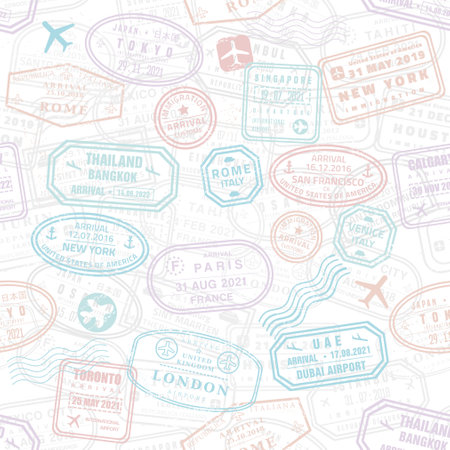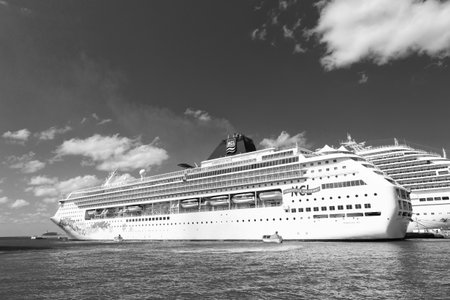Why Cruise Travel Insurance Matters
When planning a cruise vacation, most American travelers focus on choosing the perfect itinerary and packing their bags, often overlooking one critical detail: travel insurance. Many people assume that cruises are smooth sailing, but the reality is that unexpected events can easily disrupt your plans. Think about situations like sudden illness, family emergencies back home, or even bad weather causing missed ports or delayed departures. Without proper insurance, these scenarios could cost you thousands of dollars in non-refundable expenses.
It’s a common misconception among U.S. travelers that their regular health insurance or credit card protections will cover them at sea. In fact, most health plans—including Medicare—offer little to no coverage outside the United States or on international waters. Cruise lines themselves also have strict refund policies, meaning last-minute cancellations rarely result in full reimbursement. Imagine falling ill the day before your trip, or your luggage getting lost between connections; without cruise travel insurance, you’re left to foot the bill.
Travel insurance for cruises isn’t just about protecting your financial investment—it’s about peace of mind. Policies can help with everything from emergency medical evacuations to trip interruptions and lost personal items. Understanding what your policy covers before you set sail helps ensure that you’re truly protected, letting you enjoy your vacation worry-free.
Breaking Down Common Terms and Jargon
When you’re reading through a cruise travel insurance policy, it’s easy to get lost in legalese and technical terms. To help you make sense of it all, here’s a plain-English breakdown of the most common phrases and jargon you’ll see in U.S. policies. Understanding these can help you choose the right plan and avoid surprises later on.
Key Insurance Terms Explained
| Term | What It Really Means |
|---|---|
| Trip Interruption | If your cruise is cut short due to reasons like illness or an emergency at home, this covers unused prepaid expenses and sometimes extra costs to get you back home. |
| Cancel For Any Reason (CFAR) | This add-on lets you cancel your trip for literally any reason—not just those listed in the standard policy—and still get partial reimbursement (usually 50-75% of your trip cost). It’s super flexible but must be purchased soon after your first trip payment. |
| Pre-existing Condition Waiver | If you have a medical condition before buying insurance, most plans won’t cover related claims unless you buy coverage within a certain time window and meet other requirements. A waiver means your existing conditions are covered, as long as you qualify. |
| Primary vs. Secondary Coverage | Primary pays out first; secondary only kicks in after any other applicable insurance (like your health insurance) has paid their share. |
| Emergency Medical Evacuation | Covers the cost to get you to the nearest hospital or even back home if you have a serious medical emergency while traveling—important when cruising far from major hospitals. |
| Baggage Delay/Loss | Pays for essential items if your bags are delayed or helps replace belongings if they’re lost or stolen during your trip. |
| Travel Delay | If your cruise is delayed because of weather, mechanical issues, or other covered reasons, this benefit helps pay for meals, hotels, and other necessary expenses while you wait. |
| Missed Connection | If a delay causes you to miss your cruise departure (say, your flight gets canceled), this helps cover extra costs to catch up with the ship or rejoin your tour. |
The Importance of Reading Definitions Carefully
Insurance companies use very specific definitions, which can differ from everyday language. For example, “family member” might include only close relatives—or exclude in-laws. Always check each term’s official definition in your policy to know exactly what’s covered.

3. What’s Usually Covered—and What’s Not
When you purchase cruise travel insurance in the U.S., it’s easy to assume you’re protected against anything life throws your way on vacation. But as with most things, the devil is in the details. Here’s a straightforward look at what’s typically included in standard policies—and what often gets left out—so you know exactly where you stand before you set sail.
What’s Commonly Included
Most American cruise travel insurance plans cover several key areas:
Trip Cancellation or Interruption: If you have to cancel or cut your trip short due to covered reasons like illness, injury, or a family emergency, your policy may reimburse non-refundable expenses.
Medical Emergencies: Emergency medical coverage is essential, especially since your regular health insurance (like Medicare) probably won’t help outside the U.S. This can include hospital stays, doctor visits, and even emergency evacuation from the ship.
Baggage Protection: Lost, stolen, or delayed baggage? Most policies offer some compensation so you can replace essentials.
Travel Delay: If your flight or cruise departure is delayed for a covered reason (think severe weather or mechanical issues), you might be reimbursed for meals and lodging during the wait.
What’s Usually Excluded
While coverage sounds comprehensive, there are some common exclusions that catch travelers off guard:
Pre-Existing Medical Conditions: Unless you buy your policy soon after booking and meet certain requirements, claims related to pre-existing conditions are usually denied.
Certain Weather Events: Deciding not to travel because of a forecasted storm isn’t covered—actual disruptions like port closures are.
Risky Activities: Planning to go scuba diving or zip-lining on shore? Many adventure sports aren’t covered unless you purchase extra protection.
Alcohol-Related Incidents: Injuries or issues resulting from excessive drinking often lead to denied claims.
Real-Life Example
If you miss your cruise departure because of a flight delay caused by bad weather (and it’s documented by the airline), your insurance will likely help with rebooking costs and hotel stays. But if you simply oversleep or misread the boarding time, that’s on you—the policy won’t pay out.
The Takeaway
The bottom line: Cruise travel insurance can be a lifesaver in many situations, but only if you understand what it really covers. Always read the fine print and ask questions so there are no unwelcome surprises when it matters most.
4. The Claim Process: Steps and Pitfalls
Filing a claim for your cruise travel insurance might sound intimidating, but it’s actually pretty straightforward if you know what to expect. Let’s break down the process, highlight the documents you’ll need, and point out some common mistakes American travelers should avoid.
Step-by-Step Guide to Filing a Claim
- Contact Your Insurer ASAP: As soon as an incident happens—whether it’s a medical emergency, trip cancellation, or lost luggage—reach out to your insurance provider. Most companies have 24/7 hotlines for claims.
- Complete the Claim Form: Your insurer will provide you with a claim form, either online or by mail. Fill it out thoroughly; incomplete forms can delay your payout.
- Gather Required Documentation: You’ll need evidence to support your claim. This might include receipts, medical reports, police reports, or proof of expenses.
- Submit Everything Promptly: Don’t wait too long—most policies have deadlines for submitting claims. Double-check that you’ve included all required paperwork.
- Follow Up: After submission, keep track of your claim status by checking in with the insurer regularly.
What Documents Will You Need?
| Claim Type | Commonly Required Documents |
|---|---|
| Trip Cancellation/Interruption | Cruise booking confirmations, cancellation notices, receipts for pre-paid expenses, doctor’s note (if medical), death certificate (if applicable) |
| Medical Expenses | Medical bills, doctor’s report, proof of payment, prescription receipts |
| Baggage Loss/Delay | Luggage tags, airline/cruise line incident report, receipts for replacement items purchased during delay |
| Other Emergencies | Police reports (for theft), receipts for additional expenses, any relevant correspondence |
Common Mistakes US Travelers Make
- Missing Deadlines: Many travelers don’t realize there’s a time limit on filing claims—often within 20-30 days after the incident.
- Poor Documentation: Not saving receipts or failing to get official reports can result in denied claims.
- Lack of Communication: Forgetting to notify both the cruise line and the insurer about incidents can cause complications.
- Assuming All Situations Are Covered: Some travelers file claims for events specifically excluded from their policy—always double-check your coverage first.
Tips for a Smooth Claims Experience
- Keep digital copies: Snap photos of every receipt and document as backup on your phone or cloud storage.
- Create a timeline: Note dates and details as things happen—it’s easy to forget specifics under stress.
- Ask questions: If you’re unsure about documentation or deadlines, call customer service before submitting anything.
The bottom line: A little preparation goes a long way. By understanding what’s required and avoiding these pitfalls, you’ll make the claim process much less stressful—and get back to planning your next cruise adventure faster!
5. Tips for Choosing the Right Policy
Navigating cruise travel insurance options in the US can feel overwhelming, especially when every policy seems packed with legal jargon and fine print. To make sure you’re getting the right coverage for your next cruise adventure, keep these practical tips in mind:
Compare Policies Like a Pro
Start by gathering quotes from several reputable insurance providers. Don’t just look at the price—compare what each plan actually covers. Pay attention to major coverage categories like trip cancellation, medical emergencies, evacuation, lost baggage, and missed connections. In the US market, some insurers specialize in cruise-specific policies that address common risks unique to cruising, so check for those details.
Understand Your Coverage Limits
Coverage limits determine how much your insurer will pay if something goes wrong. For example, medical coverage limits can range widely; while $50,000 might sound like plenty, overseas medical evacuations from a ship can easily exceed that. Read the policy’s maximums for each type of claim and weigh them against potential real-world costs. If you have existing health insurance or credit card benefits, find out what they cover internationally so you don’t double up or leave gaps.
Spotting Red Flags in the Fine Print
The devil is in the details—especially in insurance contracts. Watch out for exclusions that could leave you stranded financially, such as pre-existing condition clauses, restrictions on certain destinations or activities (like shore excursions), or “cancel for any reason” limitations. Be wary of policies that seem too cheap; they may have hidden loopholes or excessive deductibles that make claims difficult. Always check customer reviews and ratings from trusted sources like the Better Business Bureau or Trustpilot before making a decision.
Pro Tip:
If a policy uses lots of confusing language or doesn’t provide clear answers to your questions, consider it a warning sign. A trustworthy provider should be transparent and willing to explain all terms in plain English.
Bottom Line
Choosing the right cruise travel insurance isn’t just about ticking a box—it’s about understanding what’s actually covered and making sure you’re protected against surprises at sea. By comparing policies carefully, knowing your limits, and reading the fine print with a critical eye, you’ll sail away with true peace of mind.
6. Frequently Asked Questions from American Cruisers
Do I really need cruise travel insurance if I already have health insurance?
Yes, because most U.S. health insurance plans—including Medicare—typically don’t cover you outside the country or on international waters. Cruise travel insurance can fill those gaps and protect against unexpected medical emergencies, trip cancellations, or lost luggage.
Is “cancel for any reason” (CFAR) coverage worth it?
CFAR coverage gives you maximum flexibility and peace of mind, especially if your plans might change last minute. It does cost extra, but many American cruisers find it worthwhile since standard policies only reimburse for approved reasons. Just remember: You usually need to buy CFAR soon after booking your cruise.
What’s not covered by most cruise insurance policies?
Common exclusions include pre-existing conditions (unless you purchase a waiver), risky activities like scuba diving or parasailing, and incidents related to alcohol or drug use. Read your policy’s fine print so there are no surprises later.
If my cruise is delayed or canceled due to weather, will my insurance reimburse me?
Usually, yes—if you purchased coverage for trip interruption or delay. This can help with non-refundable costs like flights, hotels, and missed shore excursions. However, every policy has its own rules about what counts as a “covered reason,” so double-check before assuming you’re protected.
Can I buy travel insurance after booking my cruise?
You can purchase travel insurance up until shortly before departure, but some benefits (like pre-existing condition waivers or CFAR) may only be available if you buy soon after your initial deposit. For the best protection, don’t wait too long!
Bottom Line for American Travelers
Cruise travel insurance isn’t just an extra—it’s often a smart investment that can save you thousands in case of emergencies or unexpected changes. When in doubt, ask questions and compare policies so you can relax and enjoy your cruise with confidence.


